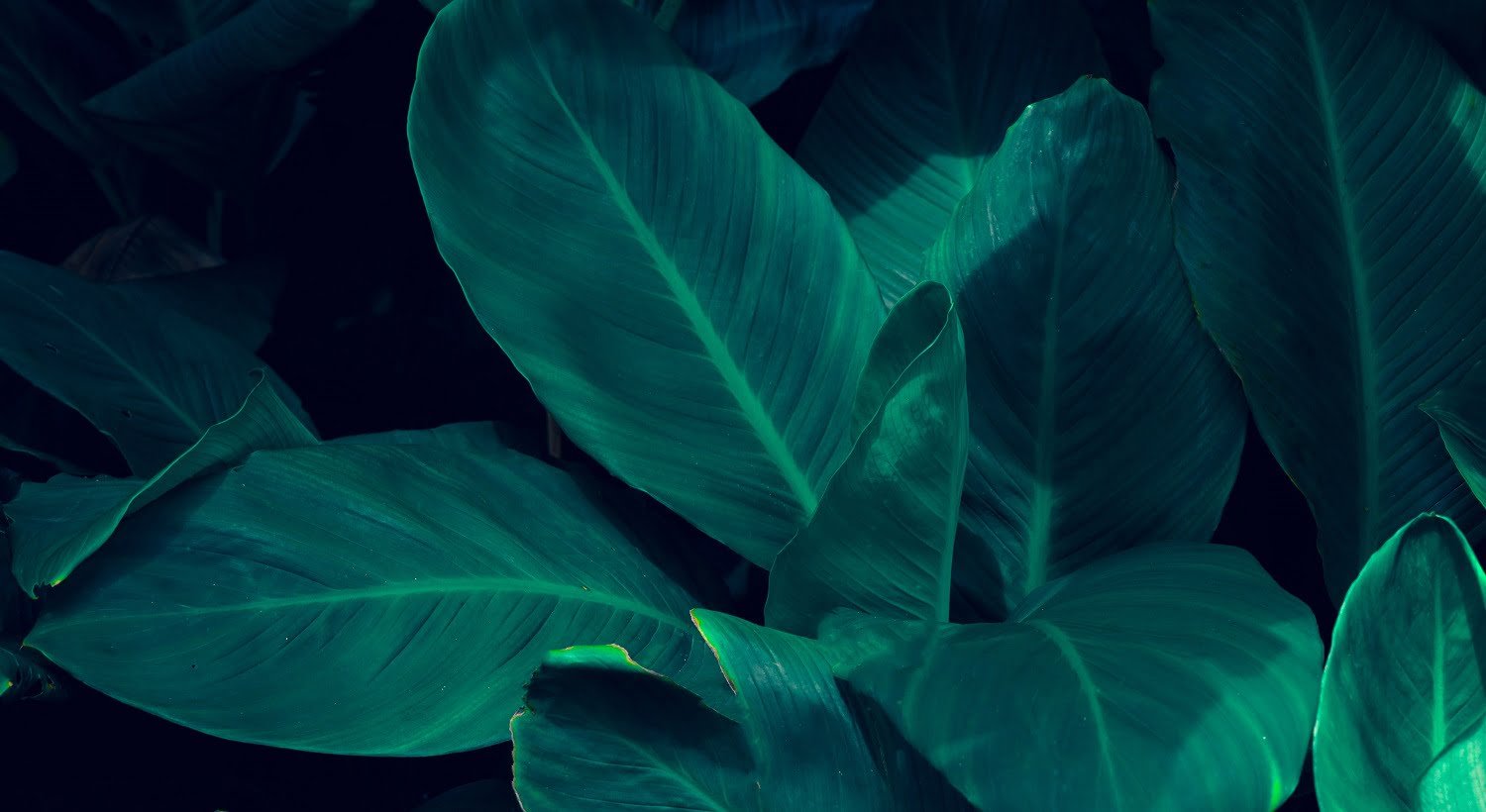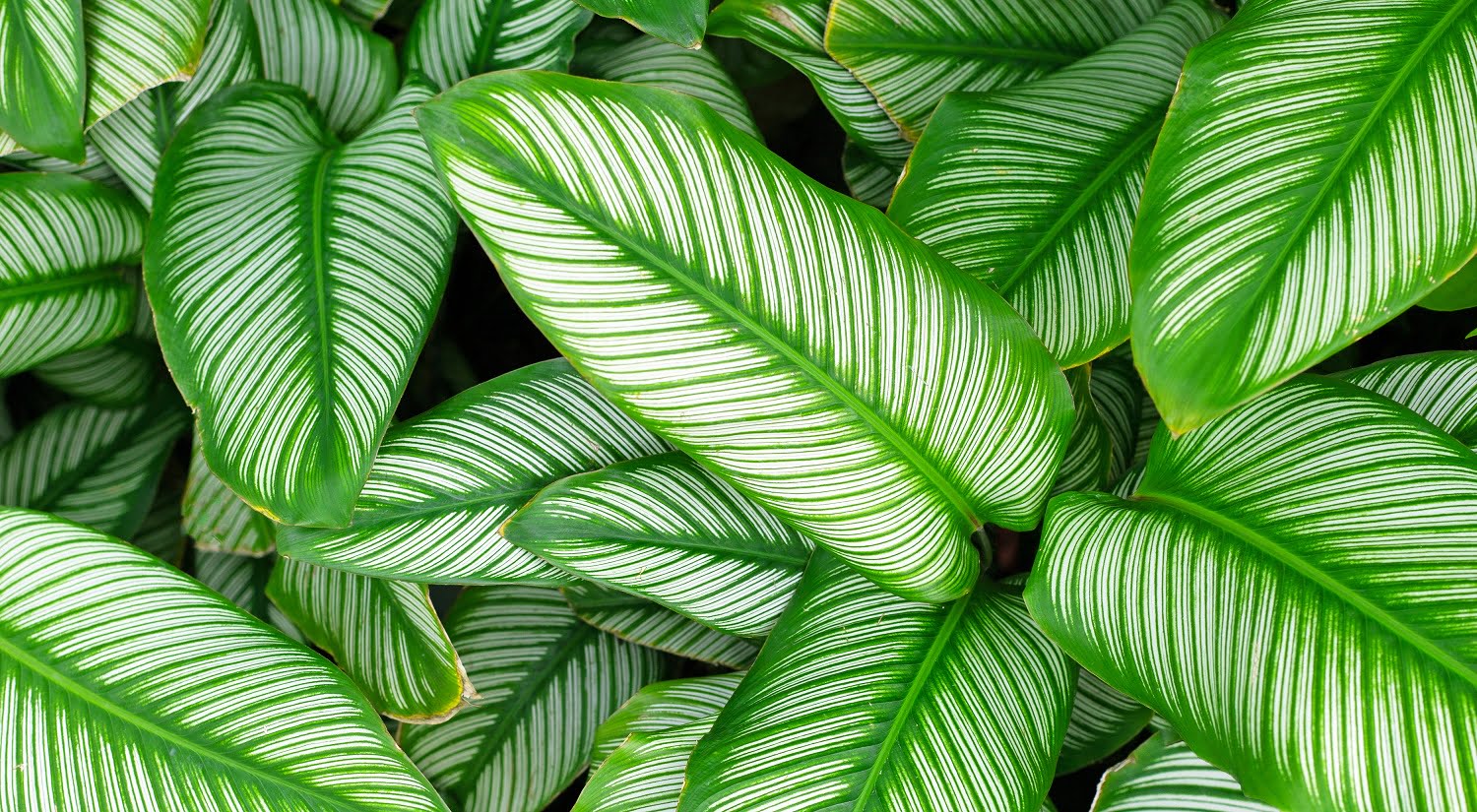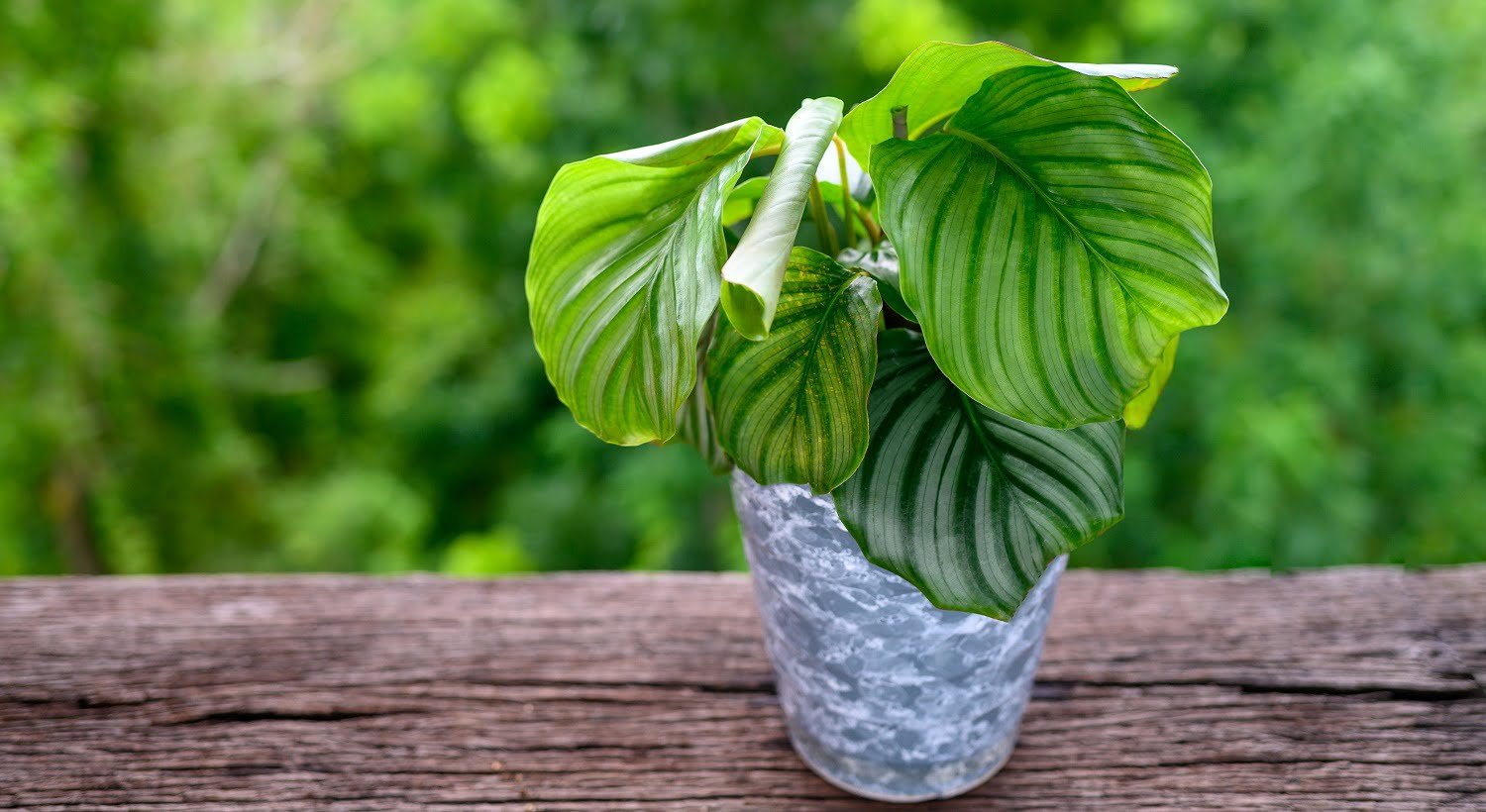Owing to their distinct looks, Calathea plants are popular houseplants. If you're considering getting one, here are some care tips that can help them thrive.

This plant goes by several intriguing names - the Prayer Plant, Peacock Plant, Zebra Plant, and even Cathedral Plant. The Calathea plant is easy to spot - with its distinct green, red, and cream leaves dissected by white veins.
It’s a compact-sized indoor plant that thrives with indirect sunlight and periodic watering. Calathea can be slightly fussy and tricky to care for, but don't let that dissuade you. Once you know more about this plant and understand its needs, caring for it will be effortless.
With their beautiful, aesthetic appeal and ability to purify indoor air, these plants make the perfect plant pets for most people. Typically, they grow slowly, reaching just about 3 feet in height. So, if you're ready to know more about these wonderful plants, go through this detailed guide thoroughly.
Let us begin!
Calathea Plant Care 101

Caring For A Calathea Plant
Caring for these beautiful plants can give you a sense of fulfillment and richness. Keeping just a few essential factors in mind, you will be able to care for and raise these beautiful plants with striking looks and enrich the environment of your home. Here are a few important things to keep in mind when dealing with Calatheas.
-
Sunlight
The Zebra plant ideally thrives in a space that receives bright but indirect sunlight. This is one of the primary reasons why it makes such a good houseplant. You can decorate the Calathea in the bedroom, bathroom, living room, and it will do just fine, as long as it gets light.
That being said, this plant can also survive in low, indirect light. A shaded spot in a sunny room is the perfect environment for it.
Another important thing to keep in mind is that the Calathea thrives in medium to bright (and even low) sunlight; however, it doesn't do well in direct sunlight. Keeping your plant under direct sunlight will cause it to lose its wonderful coloring and slowly wilt.
-
Humidity
A Calathea plant prefers high humidity. There are several ingenious ways in which you can provide humidity to your water-hungry plant. However, if you live in a place that already has a high level of humidity, don't bother.
Place a humidifier in the room where you keep the Calathea - it will thank you for this! An alternative to buying a humidifier is to place the potted plant on top of a saucer filled with water and pebbles. The functionality of the pebbles is to provide a stable and slow flow of water to the plant through the pot.
Another cheap and easy alternative is to lightly mist the plant once every few days. You can change the frequency of doing this according to how much humidity you are facing and the plant's needs.

-
Temperature
The ideal temperature range for your beautiful Peacock plant is 65°F to 85°F or 18°C to 30°C. In case the temperature dips below 60°F, or 15°C, you will observe the plant reacting visibly to this change.
To maintain a stable temperature for it, try and keep the windows shut in cooler climates. Avoid allowing cold drafts to enter your home, or at least the room in which you keep the plant.
-
Water
Although this plant loves humidity, it isn't a huge fan of overwatering. The best rule to keep in mind is to keep the plant's soil moist but not soggy.
Ideally, you should water the plant once every 1 to 2 weeks. Allow the soil to half-dry in between watering sessions. You might have to water it with variable frequency depending on the situation (brighter light, less humidity, high temperatures, etc.)
To understand whether to water or not, insert your finger into the soil about 2.5cm down, and test the dryness of it. If the soil is moist, avoid watering the Calathea, as it will react negatively. However, if the soil is dry, feed it at room temperature, preferably with distilled water.
That being said, if feeding it distilled water is problematic, tap water will work just fine. Remember to let the water sit out overnight before feeding it. This small trick will ensure that the chlorine content in the water dissipates naturally and doesn't harm your plant.
If you are ever in doubt about how much you should water this plant, just remember one thing: It is better to underwater Calathea than overwater it.
-
Fertilizer
When it comes to using fertilizer for the Calathea, it isn't too fussy. You can opt for a liquid fertilizer diluted to just ½ strength. Feeding it this additional nourishment is only required during the growing season. You can entirely skip doing this during the fall and winter seasons.
An important tip - Water the plant well before fertilizing, diluting the strength of the fertilizer thoroughly. Otherwise, you risk burning the roots of the delicate Calathea.
You can opt for a multi-use marine fertilizer for the Calathea. These fertilizers are completely safe for the plant and pets, children, and your family. Moreover, it doesn't create unnecessary mineral buildup in the soil, which is vital for a plant.
This fertilizer is also eco-friendly, which makes it an ideal option for the environmentally conscious. However, you can also opt for other fertilizers. Ensure that you research them thoroughly, so it doesn't end up harming the Calathea.

-
Container & Soil
Coming to the soil type for this plant, you need to be mindful of what you use. Here, the Calathea can be slightly fussy again. It prefers well-draining soil that also has the inherent ability to retain water.
Look for a well-draining but the light potting mix for it. This ensures that the plant's roots remain moist, and it can seep water as and when it requires.
As for the container, it is best to get one with adequate draining holes. It ensures that the soil doesn't get too soggy or have stagnant water collecting in it. Furthermore, it encourages air circulation and ventilation for the plant.
You can also opt for a terrarium, as they add an aesthetic value to the room while acting as the ideal environment for a Calathea. If you are creative enough, you can try a DIY project to cut up a bottle or paint it. Place your Calathea plant in the DIY bottle for a perfect home.
-
Pruning
The maintenance of this plant is relatively straightforward and effortless. Since it is a slow-growing plant, it doesn't require excessive amounts of pruning. Simply trimming the stems and doing away with the dead and wilted leaves is enough.
When pruning the leaves, ensure to cut the leaf at its base, where the plant joins with the stalk. This gives the leaf a clean cut, adding aesthetic value. It makes the plant look more presentable, which is fantastic.
If you notice that there are yellowing or brown bits only on the leaf's edges, don't worry. You shouldn't cut the entire leaf away in this case. Simply trim the leaf with scissors or a small pruning tool along its natural edges and curves.

Another essential tool to keeping this plant looking fresh and healthy is to dust it regularly. Every once in a while, use a damp cloth to wipe the beautiful Zebra plant's leaves. It removes the fine layer of dust and pollution from its surface, allowing the plant to breathe easily.
-
Repotting
Not many people are aware of the fact that Calathea plants propagate through division. In fact, propagating the plant during its repotting is one of the best and most convenient ways of growing it.
Once every few years, repot your Calathea at the beginning of its growing season. Remember, you can use a diluted fertilizer during this time to ensure that it grows and matures well.
The compelling reason why you should divide and propagate the plant during repotting is that the process puts the plant under high stress. The more times you repot or divide the plant, the more stressed out it becomes, eventually refusing to grow well.
By dividing the plant during its repotting sessions, you put less stress on it in the long run. Observe the plant's roots, looking for the natural separation in them. Gently split the plant and repot it in its appropriate soil mix and container.

Why Should You Get A Calathea Plant?
Calathea plants are one of the most unique and aesthetic looking houseplants. They are immensely popular due to their peculiar looks. Moreover, they are relatively easy to care for - as long as you know their needs.
Aside from the apparent beauty that the plant adds to your home, there are several other benefits of choosing one for your home. A Calathea plant instantly brightens up any room it is kept in, owing to its bright, beautiful leaves with unique textures and patterns.
They don't require too much sunlight and can tolerate medium to low levels of light. This makes them apt for growing in almost any room of your home. Furthermore, they don't require too much watering or maintenance as well.
Moving over to the health benefits, this plant is known for its ability to purify indoor air. The leaves efficiently filter out pollutants, all the while increasing the level of oxygen in the house. They also boost the humidity content of a room.
Caring for plants and watching them grow is exceptionally fulfilling, even for the new plant parents. People experience a boost in serotonin levels with these wonderful plants around their homes.

Common Problems, Causes & How To Fix Them
In general, the Calathea plant is known for being low-maintenance. It doesn't beg for excessive amounts of attention and care, unlike many other houseplants. That being said, there are a few common signs and symptoms that let you know how the plant is feeling.
Here are the most common problems it faces, how to recognize them and fix them:
-
Wilting & Curling Leaves, Dry Potting Mix
Ideally, this plant has bright leaves with white veins running through its surface. The leaves can be found in various beautiful shades of red, green, and even pale shades. If you notice your plant's leaves starting to wilt or curl, it is a clear symptom of something. Observe the potting mix as well, whether it is dry or moist.
This is a common issue with Calathea plants, and it is caused due to underwatering it. We recommend watering the plant once every week for the next couple of weeks, or until you see the plant recover its coloring.
The dry potting mix is also a clear symptom of underwatering. Fortunately, this problem has an easy solution, so don't worry about it too much.

-
A Black Base & Yellow Leaves
The base of your Calathea plant should be bright green. Any other shade can be worrisome and must be looked into at the earliest. The same goes for its leaves. Although these plants are known to have pale leaves, if the majority of the plant is green and some leaves start to turn yellow, it is a symptom of overwatering.
Yellowing and wilting leaves can also be a symptom of excessive sunlight. However, it is relatively easy to fix this problem, with a little patience and effort.
Consider watering your plant just once in 2 weeks, or even lesser, depending on its requirements. If you keep the plant in a room where it receives too much bright, direct sunlight, move the plant to a shaded spot.
Remember that even though this plant likes sunlight, it only likes indirect light.
-
Leaf Spots
Another symptom to look out for is leaf spots. You may notice peculiar colored spots - pale shades of yellow or white, or even darker shades of brown and black. These leaf spots indicate a fungal infection. However, it may also indicate mineral buildup.
To remedy this problem, water your plant with distilled water only. Using tap water can be one of the primary issues that lead to mineral buildup. If you have no way of using distilled water, keep a glass of tap water out overnight, so the chlorine content dissipates naturally.
Feed water directly into the surrounding soil area to bring the natural, beautiful coloring back. It is best to keep the plant out of reach from children or pets.

Varieties Of Calathea Plants
If you have ever Googled "Calathea Plants," you would have been stunned to find several varieties of this plant. As a matter of fact, each variety comes with its unique textures, shape, designs, size, and color.
Curious to know a little more about this eye-catching plant? Here are some of its most popular varieties:
-
Pinstripe Calathea
One of the most popular Calathea varieties, this plant has stunning leaves that grow at least a foot long. However, the plant itself never grows beyond 2 feet, making it an ideal indoor houseplant.
The leaf features a beautiful deep shade of green, with white, pink, and emerald swirls forming a feather-like pattern on its surface.
-
Peacock Calathea
As the name suggests, this Calathea variety has foliage that looks as stunning as a peacock feather. With a reddish-purple or maroon underside, the leaves feature dark green and white patterns on their edges, top, and sides. This contrasting color scheme gives it a particularly striking appeal.
Each leaf is oval-shaped and grows up to 12-inches in length. The plant itself, however, reaches just 2 feet in total.

-
Rattlesnake Calathea
This variety of Calathea has massive leaves that can grow over 2 feet long. The plant doesn't grow beyond 2 feet, just like its other varieties. The excessively long leaves with the smaller body of the plant give it the appearance of rattlesnakes.
The leaves of this plant have intricate designs over its body. You will find them sporting various shades of green that overlap each other. The leaves are spotted with their iconic green dots all over.
With a unique, red underside and wavy-shaped leaves, this variety of Calathea is immensely popular. Proper care and maintenance will ensure that the plant retains its stunning color and patterns.
-
White Fusion Calathea
This particular variety of Calathea is slightly more finicky than its green counterparts. Due to its white coloring, it is unable to photosynthesize light as well as the others. If you decide to get one of these rare species in your home, you will need to provide it with adequate water, sunlight, and care to keep it thriving.
The White Fusion Calathea reaches only about 12-inches in height. It can be an excellent option for those looking for a more compact species to keep on their desks or in their offices.
Although this species requires more effort than the others, eventually, the effort is worth it. The White Fusion is one of the most popular and aesthetically striking species of Calathea.
-
Zebra Plant
Its name makes it quite clear to us how this variety of Calathea looks. With a dark green body and lighter, emerald-colored stripes, the plant species resembles a zebra. This evergreen perennial is one of the few species of Calatheas that reach 3 feet in height. The leaves, however, measure just 1 foot.

Conclusion
If you have been contemplating getting a houseplant, the Calathea might be the best one to start with.
With minimal effort and supervision, these plants can grow to look stunning, adding value to any room they are placed in. We hope this detailed guide helped you understand the specific needs of this plant better.
And with that, we are finally at the end of our guide. Wishing you all the best on your plant parenting journey.
Stay safe and let the Calathea grow!
Related Articles
